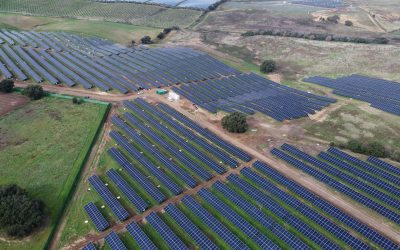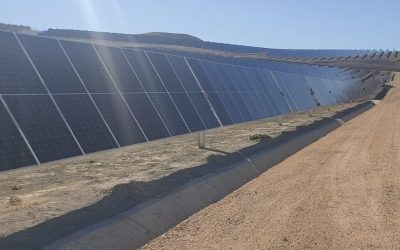Luis Selva, Managing Director of BNZ, analize the last report from Intergovernmental Panel on Climate Change (IPCC), which has been published in Spanish at El Economista.
“It is now or never if we are to limit global warming to 1.5°C. Without immediate and deep cuts in emissions in all sectors, it will be impossible,” said Jim Skea, co-chair of IPCC Working Group III, which released the latest report. The dire warning in the latest report of this United Nations body has intensified the debate on the maneuverability of mankind to reverse the effects of global climate change.
All this in a context where there is growing evidence that human degradation and destruction of ecosystems increases people’s vulnerability. The reason? Unsustainable use of land, natural resources, deforestation, biodiversity loss and pollution. These ongoing and severe changes in biodiversity are negatively affecting the ability of ecosystems, societies, communities and individuals to adapt to climate change.
And, according to the report, the loss of ecosystems and their services has cascading and long-term impacts on people globally, especially for indigenous peoples and local communities who depend directly on ecosystems to meet their basic needs. What irreversible changes do we want to leave for future generations?
Given this scenario, one of the key vectors in the fight against climate change is to advance with maximum ambition in the promotion of renewable energies. In fact, the IPCC itself highlights in its latest report that green generation is one of the reasons for optimism at the present time, applauding the significant decrease in the cost of renewable energy sources since 2010, up to 85 percent for solar and wind energy, and batteries.
The countries of Southern Europe have enormous geographical and economic potential to contribute to this leap in the generation of renewable energies, especially in solar photovoltaic, which the Old Continent must contribute to the world as a whole. However, countries with a great latent capacity to develop these technologies, such as Italy, Spain and Portugal, do not appear in the top positions of the “Green Future Index 2022” published by the Massachusetts Institute of Technology (MIT), which ranks 76 countries according to their readiness to move towards a low-carbon future.

“The time to act is now.”
“The evidence is clear: the time to act is now. We can cut emissions by half by 2030,” the IPCC points out in one of the first sentences, by way of a warning about the limiting moment we are living. The means most likely to achieve this goal of accelerating the energy transition, according to the report, is precisely a more intensive use of renewable energies.
The IPCC is based on more than 18,000 scientific publications and its main objective is to shed light on how action is needed to achieve climate goals and what the main issues are. The recent third installment of the IPCC’s Sixth Assessment Report focuses primarily on climate change mitigation. And this is where five key issues are identified: the use of fossil fuels, methane and CO2 production, livestock and the transition to greener cities.
Although all points are essential in the fight against climate change, the one that has to do with energy as such, the use of fossil fuels, is perhaps the most important due to the amount of carbon emissions that are released year after year. In this regard, in relation to energy sources, the report indicates that solar photovoltaic generation increased almost threefold to 680TWh in the 2015-2019 period, while wind and solar combined accounted for 8% of total electricity generation in 2019. These percentages will undoubtedly grow, and the IPCC report notes its confidence that the addition of a large share of variable generation will be mitigated through various energy storage technologies, transmission systems, demand response technologies and other solutions that are already proven.
The solar sector, in particular, has already certified what it is capable of, and is poised to deploy the enormous amounts of clean energy needed to decarbonize the power sector. What is needed is planning and permitting to modernize electricity grids, as well as scaling up and decentralizing the PV power generation ecosystem. In this way, by removing obstacles, solar PV will be able to play its leading role in this decade.
It is this same energy that can eliminate 4.25 billion tons of carbon emissions during this decade. Despite this, the measures proposed by governments so far fall far short of what is needed, as capital flows to fossil fuels continue to outstrip the money allocated to the fight against climate change.
It is therefore important to highlight the difficulties encountered at the administrative and legal level to advance in the processing of projects. The Mediterranean area is a very rich territory in terms of energy and infrastructure, but to achieve this full potential we must simplify and speed up administrative procedures. If we manage to do this in a more agile way, there is no doubt that we will be able to achieve the ambitious targets we have.
The role of Southern European countries
If we look again at the Green Future Index, we can glimpse that Spain, Italy and Portugal are among the countries that rise the most in the ranking, with Spain in 13th position, Italy in 17th and Portugal in 18th, thanks to the installation of renewables and also due to the closure of several coal-fired power plants. In addition, in the case of Spain, it is important to note that it is in sixth position in relation to climate policy, where concepts such as sustainable agriculture and carbon taxes, among others, are taken into account.
For this reason, regulation and the commitment to a major development of renewable energies is one of the main drivers of this necessary change, but so is the capacity for adaptability and the business and citizen impulse. From the installation of photovoltaic panels for self-consumption in buildings to the development of large solar parks to supply industry and hundreds of large cities.
In this context, the generation of clean energy by IPPs such as BNZ is essential to achieve the targets set to keep global warming to 1.5 degrees by 2050. As IPCC Chairman Hoesung Lee himself said at the launch of the paper, “We are at a crossroads. Decisions we make now can ensure a livable future. We have the tools and knowledge to limit warming.”


